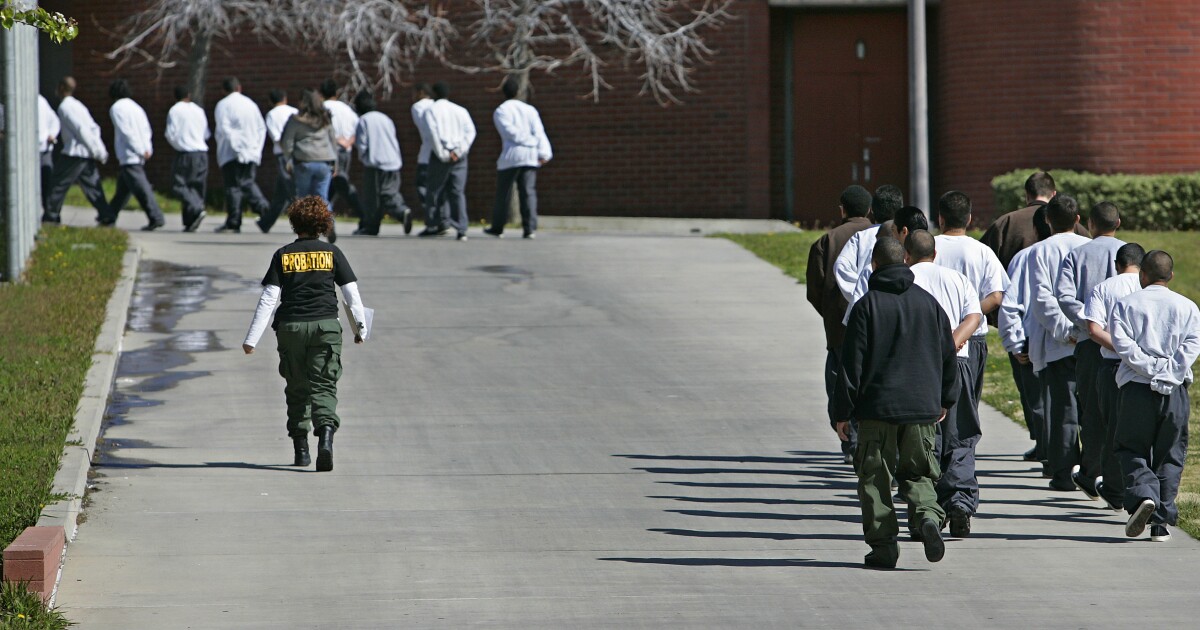

This is the fourth in a four-part series looking into the juvenile justice system in Los Angeles, as told by people who work there. It’s a world where youth convicted of violent felonies are said to control the jails, while law enforcement is helpless to stop it due to defunding and downgrades to formerly strict laws.
The policies of Los Angeles District Attorney George Gascon are helping fuel a violent crime surge — as teenage felons roam the streets freely despite having committed crimes that once would’ve landed them behind bars, according to insiders.
For the few violent offenders who enter the crumbling Los Angeles County juvenile jail system, thousands more are still on the streets without having been charged for crimes that once would have resulted in automatic detention. Insiders told the Washington Examiner Gascon’s anti-jail stance for juvenile offenders plays a significant role in the subsequent crime spike.
“Our prosecutorial approach should be biased towards keeping youth out of the juvenile justice system and when they must become involved, our system must employ the lightest touch necessary in order to provide public safety,” Gascon wrote in a special directive to prosecutors on Dec. 7, 2020.
BROKEN BONES AND PTSD: GUARDS PAY PRICE INSIDE LA’S JUVIE JAILS
This has created an open season for mayhem by youthful criminals, law enforcement officials said.
“There is no accountability for any of these [serious] crimes. If you look at juvy crime across the board, it’s through the roof,” a Probation Department manager said. “Nothing happens to these kids if we catch them. You will be lucky if you even get [home] detention. They are in custody as long as it takes to book them.”
The only offenders who see the walls of Juvenile Hall are killers, rapists, and armed robbers, the manager said. This is exemplified by a California Department of Justice report that said the number of juveniles arrested for felonies last year statewide was 9,162, a decrease of 79% from a decade ago.
“You can walk around with a loaded firearm concealed illegally, and we can’t prosecute it. That is a misdemeanor,” said one of the attorneys within the District Attorney’s Office who is familiar with juvenile cases. “We used to be able to file a felony if there was a prior [conviction]. Now we can’t file anything.”
That is because Gascon has a written policy against filing certain charges, including the use of a gun committed in crimes, while many felonies have been downgraded to misdemeanors by state lawmakers.
Even minors charged with attempted murder may not be locked up. One teenager was sentenced to a group home, where he later committed murder, the manager said. It’s hard to blame police for the lack of arrests when they know charges will not be filed, the manager added.
“When the officers stop arresting and we stop prosecutions, they can say with a straight face: Prosecutions are down. We are doing [a] great job,” the prosecutor said.
To exemplify this, Gascon’s directive ordered prosecutors to stop charging juveniles with certain crimes if they endured trauma in childhood.
“Crimes involving property damage or minor altercation with group home staff, foster parents and/or other youth shall not be charged when the youth’s behavior can be related to the child’s mental health or trauma history,” the directive said.
In addition, insiders say prosecutors are ordered to file the lowest possible charge rather than seek substantial jail time.
“Filings will consist of the lowest potential code section that corresponds to the alleged conduct and mandate one count per criminal act,” the directive said.
Even sex crimes are given a softer touch.
“We will avoid labeling normative adolescent behavior as a sex offense and instead collaborate with appropriate partners to provide effective interventions that reduce recidivism and support a youth’s education and development around healthy sexual behavior,” the directive said.
Youthful criminals are aware of the rule changes, and this has led to the out-of-control smash-and-grab phenomena that began last summer at retailers and home invasion robberies or stalking someone then stealing watches and purses, police said.
“A lot of times, we just cite them out when it used to be a grand theft of a person — a felony,” Los Angeles County Sheriff’s Department Lt. Craig Walker said. “They get through the revolving door and don’t see it slammed shut and locked behind them. So they will keep doing [crime] like everyone else.”
CLICK HERE TO READ MORE FROM THE WASHINGTON EXAMINER
For Gascon, he sees the new policies as a way to better a child’s life.
“We must invest in community-based services, schools, health and mental health programs and other resources that allow all children to thrive, no matter their zip code, race or gender,” the directive said. “Any court involvement in a young person’s life should be proportionate, for the shortest duration possible and result in a pathway towards a better future for youth.”




